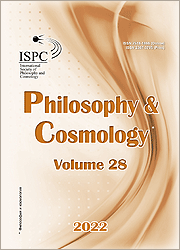World Kaleidoscope
World Kaleidoscope
Author(s): Aleksandr YeremenkoSubject(s): Metaphysics, 19th Century Philosophy, Analytic Philosophy
Published by: Международное философско-космологическое общество
Keywords: C.G. Jung; G.W. Leibniz; synchronicity; coincidence; concordance; contingency; world harmony; gestalt;
Summary/Abstract: The article focuses on the concept of synchronicity, which C.G. Jung developed in the late period of his creative work. Scrupulous attention is confined to the organic connection between the concept of synchronicity and the theory of archetypes. Since synchronicity is an a causal semantic coincidence of events, the article reveals the metaphysical meaning of such concepts as “coincidence,” “concordance,” and “correspondence.” It is reasoned that synchronicity is a particularly strong case of coincidence; the decisive factor of synchronicity is the presence of a single meaning in events belonging to different causal chains. The connection between the concept of synchronicity and G.W. Leibniz’s concept of world harmony is shown. Three hypotheses that complement each other are put forward to explain synchronicity: 1) synchronicity as a manifestation of the even theme nature of events; 2) synchronicity as a manifestation of the hidden plotline of the Universe; 3) synchronicity and kaleidoscopicity. An even theme is a kind of virtual cell filled with real events in history. If events that are similar in meaning and belong to different events occur with the same actors, then such events prove to be synchronic. If we use the metaphor “world is a literary text,” widespread in culture, then synchronic coincidences prove to be a kind of author’s signs scattered in this text. The image of a kaleidoscope is used to substantiate the hypothesis of world development as a change in holistic gestalts. In such a picture of the world, individual causal chains lose their relevance against the background of true causality, which is a change in holistic gestalt
Journal: Philosophy and Cosmology
- Issue Year: 28/2022
- Issue No: 28
- Page Range: 168-184
- Page Count: 17
- Language: English

